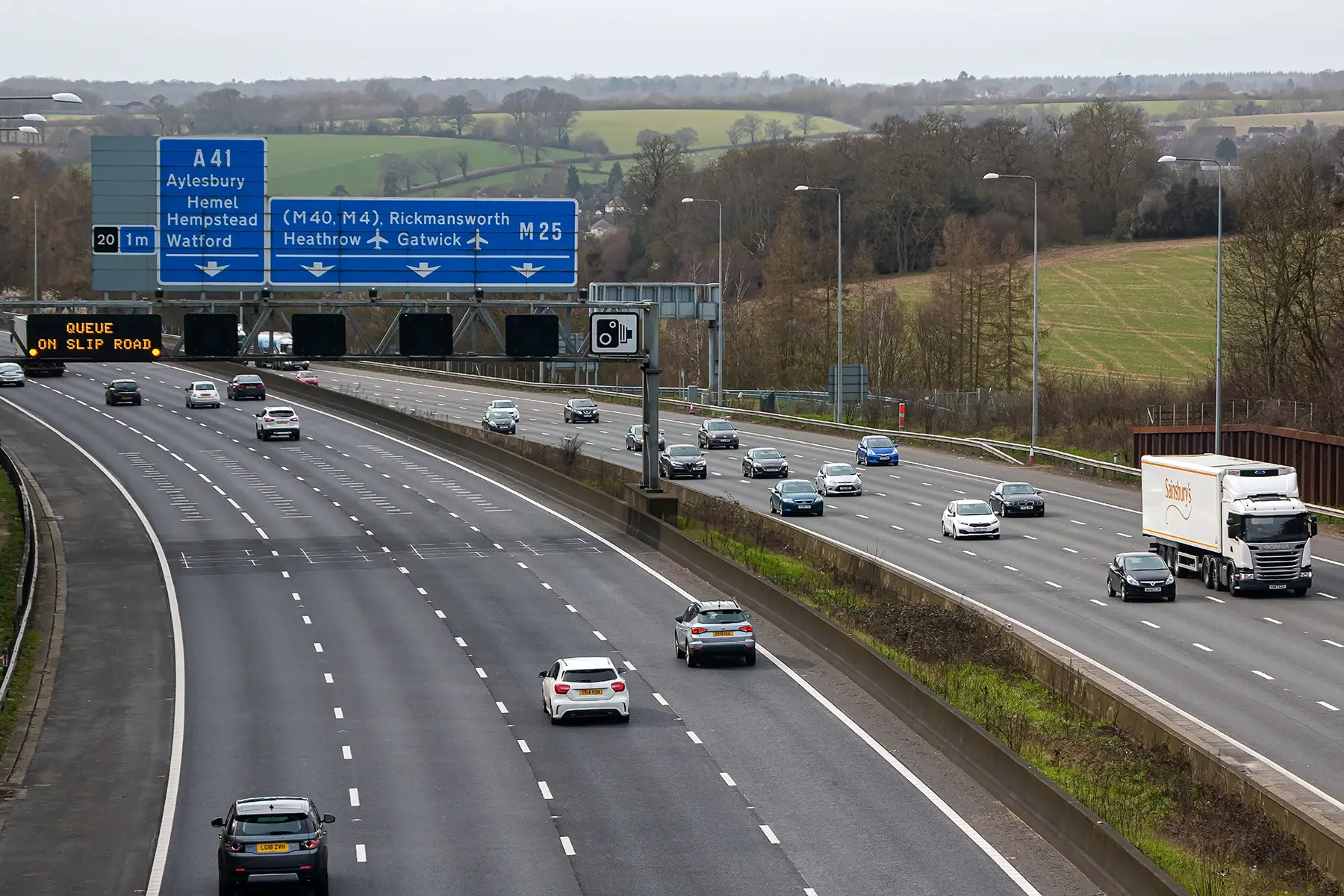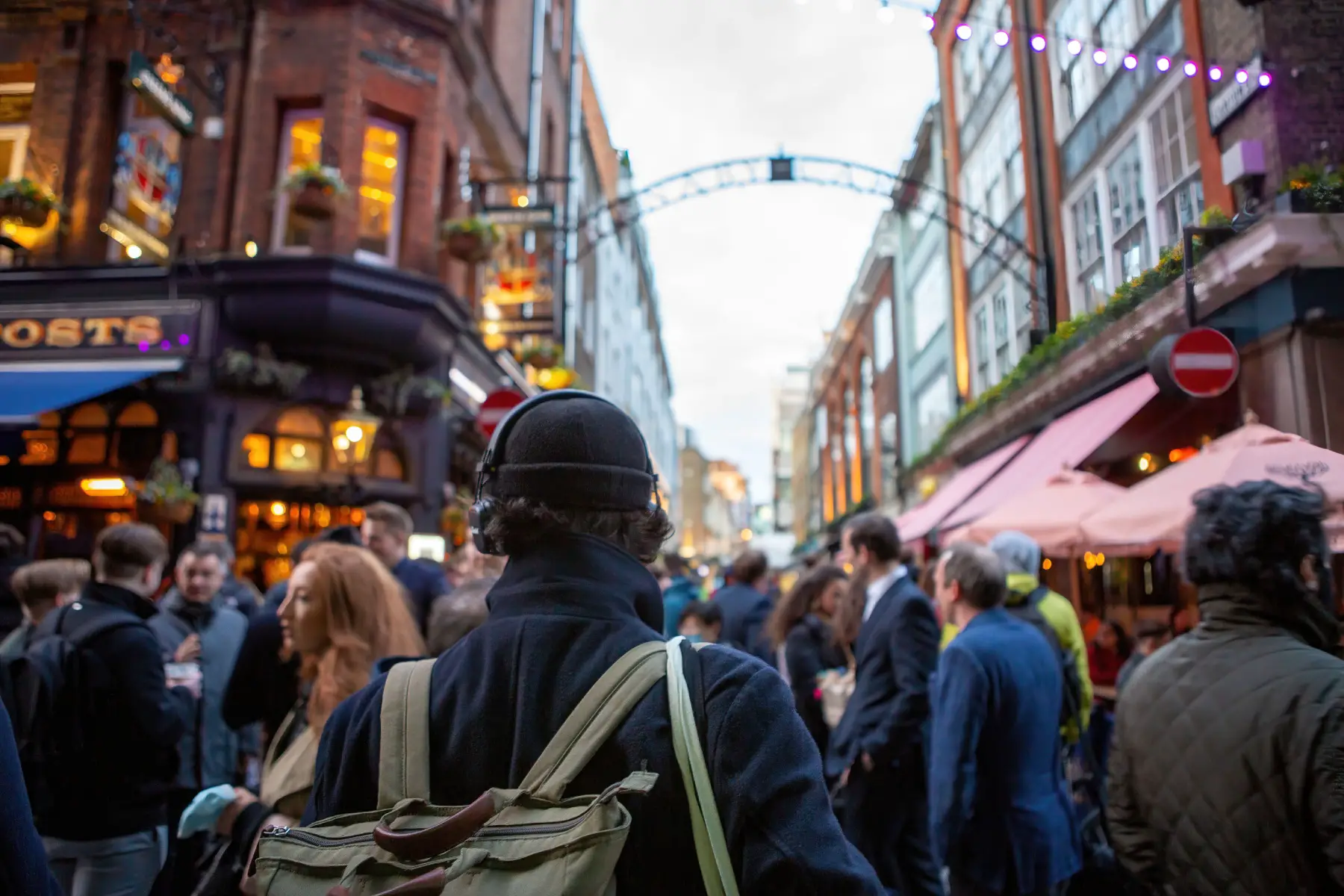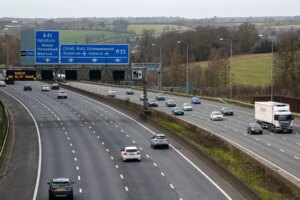If you’re planning to buy a car or drive in the UK, you’ll need a valid driver’s license. If you already have a permit from the country you’re moving from, some reciprocal agreements mean you can drive on your current license as soon as you arrive.
However, moving to the UK from some countries requires you to take an additional driving test. The good news is that it’s relatively easy for most citizens to exchange their licenses, and you’ll be on the road with minimal fuss.
Keep reading to find out what the process involves, including sections on:
- British driver’s licenses
- How to get a British driver’s license
- Driving lessons in the UK
- Driving tests in the UK
- Driving in the UK with a foreign driver’s license
- Exchanging a foreign driver’s license in the UK
- How to renew a UK driver’s license
- Lost or stolen driver’s licenses
- Driver’s licenses in the UK for other vehicles
- Useful resources
AXA
AXA is a leading provider of car insurance in the UK. Their fully customizable insurance premiums ensure you have the right coverage for you and your vehicle. Calculate your quote today and give yourself peace of mind behind the wheel with AXA.
British driver’s licenses
Anyone over 17 in the UK can drive if they have a valid driver’s license (driving licence in British English). When you first arrive in the UK, you may use a document from your home country, as long as it has not yet expired. Those from the European Union (EU) and European Economic Area (EEA) may continue to drive as normal, despite Brexit, but other nationals might need to exchange their license after a set period.
For example, those with a valid permit from Ukraine may use theirs for up to three years. Meanwhile, people with licenses from the following places may drive for 12 months before exchanging them without having to retake their test:
- Gibraltar
- Guernsey
- Isle of Man
- A ‘designated country or territory‘
Citizens from all other countries not listed must sit a new driving test before the end of their first 12 months living in the UK in order to exchange their license for a UK one.
What does a UK driver’s permit look like?
The UK driver’s license is pink with a passport-sized photo, a Union flag and the following details:
- First name and other names
- Birth date and country
- Date of license issue and expiration
- Issuing agency (usually DVLA)
- Driver’s number
- Signature
- Address
- Which types of vehicle the permit is valid for.

The UK also issues green provisional licenses for learners, which include a red letter “L” on a white background. This document is a valid form of identification in the country.
How to get a British driver’s license
If you fall into one of the groups that require a test before getting a British license, you must first apply for a provisional license. You can do this online via the DVLA (£34) or by filling out a D1 form at a UK Post Office (£43). In England, Scotland, and Wales, you must provide the addresses you’ve lived at for the last three years and one of these documents:
- A valid UK passport number (you do not need to send the document itself)
- A share code, if previously used when applying to the EU Settlement Scheme
- A current and valid foreign passport with a visa sticker or stamp (called a ‘vignette’) showing you have permission to live in the UK
- A current and valid Irish passport
- A UK biometric residence permit (BRP)
- A travel document
- A UK birth, adoption or naturalization certificate – you’ll need to send further proof of identity with this
- Evidence you receive a state pension
In Northern Ireland, if you already hold a UK photocard license, you will not need to provide further ID. The original of one of these documents is required if this is your first NI license:
- Full, valid, current passport in your current name
- A valid UK Biometric Residence Permit
- UK or Republic of Ireland birth certificate
You can apply for your provisional license from 15 years and 9 months old, but you may only drive a car once you are 17. However, if you are 16 and receive the enhanced rate of the mobility component of Personal Independence Payment (PIP), you can start to drive earlier.
How long does it take?
You should receive your provisional license within five days of an online application and about four weeks if applying by post.
Driving lessons in the UK
Once you have a provisional driver’s license, you may begin driving lessons. In the UK, you can either learn with an official driving instructor or with friends and family. However, they must be over 21, hold a permit for the type of vehicle you are learning to drive, and have had a full driver’s license from the UK, EU, Switzerland, Norway, Iceland, or Liechtenstein for at least three years. Don’t forget that you must display “L” plates on your vehicle before passing your test.
There is no minimum number of lessons to complete before taking a driving test. The average person, however, needs approximately 45 hours of classes and 22 hours of practice. There are regulated costs of driving lessons in the UK, and instructors can set their own prices. The average, however, is about £30–50 per hour lesson (2023).
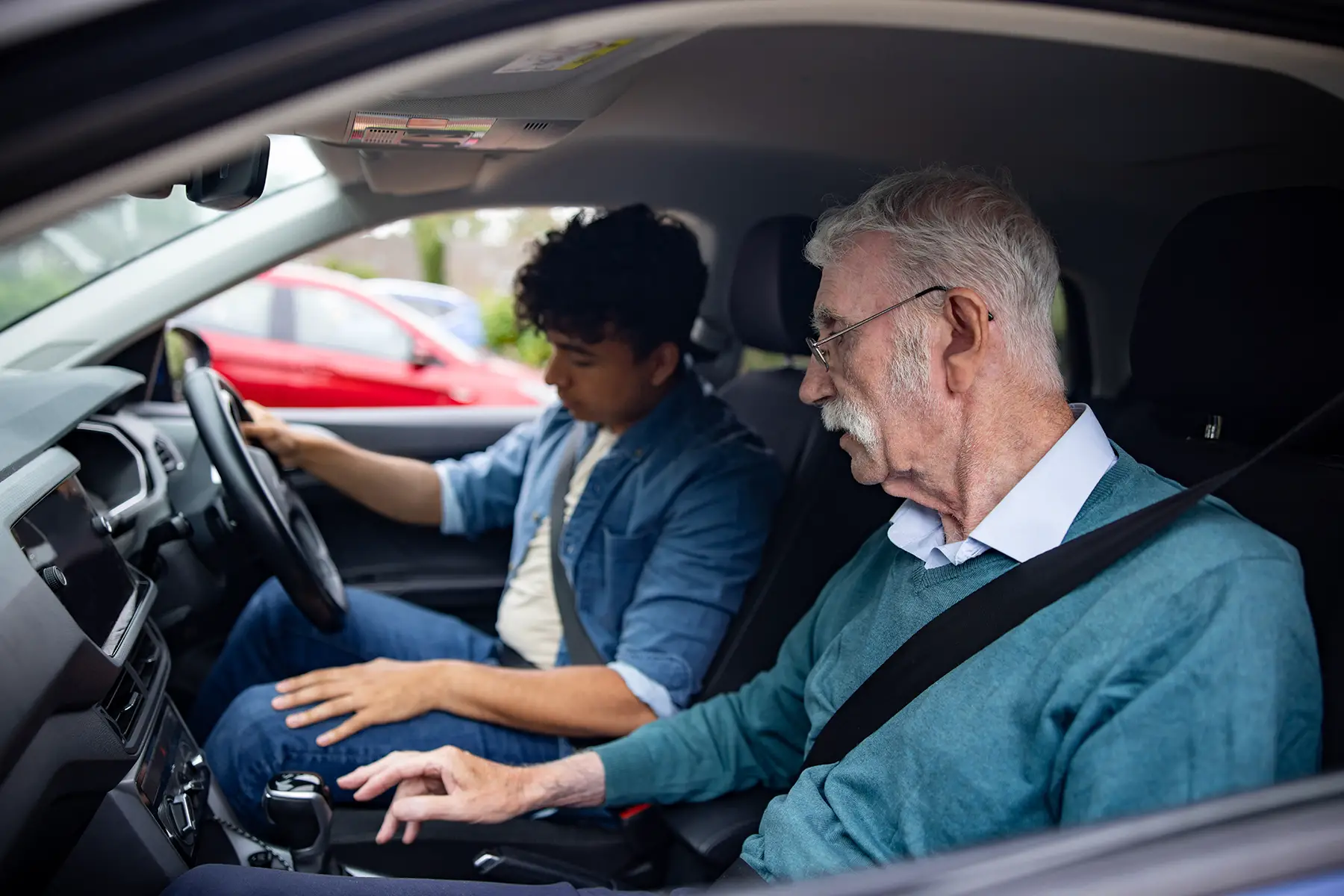
Intensive driving courses are designed to speed up the learning process. A one-day course costs around £200 and is helpful if you want to practice just before your test. You can also sign up for week-long courses, which cost around £1000, or two-week ones, which will set you back about £2000.
Driving schools in the UK
If you need a driving instructor but you’re not sure where to start, GOV.UK offers a search tool for instructors approved by the Driver and Vehicle Standards Agency (DVSA):
- Find a registered driving instructor in England, Wales or Scotland
- Find a registered driving instructor in Northern Ireland
Bear in mind that it’s illegal to charge for driving lessons if you are not registered and qualified. If you come across an instructor who does so, contact the DVSA.
Driving tests in the UK
To be eligible for a test in England, Wales, or Scotland, you must have lived there for at least 185 days in the last 12 months before the day you take your test. Meanwhile, if you want to take a test in Northern Ireland, you must be normally resident there.
The exam itself consists of two parts:
Driving theory tests
You must pass your driving theory test before booking your practical driving test. To book one, visit the government pages for England, Wales, and Scotland or Northern Ireland. There are theory test centers all over the country, and you can take the exam in English, Welsh, or British Sign Language (BSL). Expect to pay £23.
The test consists of 50 multiple-choice questions on a computer, which you must answer within 57 minutes. You then complete a hazard perception test, which shows 14 different video clips. During this part, you must click when you notice a ‘hazard’ developing. You must score at least 43/50 to pass the multiple-choice section and 44/75 to pass the hazard perception test.
There are plenty of resources to help you prepare. These include:
As of June 2023, the pass rate for the theory test was 45%, meaning just under half of those who sat the test passed the first time. If you fail, you will receive a letter highlighting where you did not score enough points. You will need to rebook the theory test (at least 3 working days after your first attempt) and take it again in full.
If you find reading difficult or have a disability or health condition, there may be support available.
Once you pass your theory test, you will receive a letter with a pass certificate, and you can book your practical exam. You must pass your practical driving test within two years of getting this certificate, otherwise, you must retake the theory component.
Practical driving tests
If you’re ready to take your practical driving test, you can book it online (also by phone in Northern Ireland). You can book up to 24 weeks in advance, and you can find examination centers on GOV.UK or nidirect.

Tests for cars cost £62 during the week and £75 at weekends (£65 and £95 in Northern Ireland). You can take them in English, Welsh, or BSL.
Practical driving tests take about 40 minutes and consist of:
- An eyesight check
- Two ‘show me, tell me‘ questions
- General driving ability by following directions from your tester
- Pulling over to the side of the road
- Reversing your vehicle
- Independent driving, which may include following GPS navigation – you will not be faulted if you go off route during this time, and your examiner will help you find the way back.
You pass your driving test if you make no more than 15 ‘minor’ driving faults and no serious or dangerous faults. After the exam, the instructor will tell you if you made any faults, which these were, and whether you have passed. If you pass, you will receive a certificate, but if not, you can rebook your driving test for at least 10 days later. In some situations, you can appeal your result.
The practical test has a pass rate of just under 49%.
Driving in the UK with a foreign driver’s license
If you have a driver’s license from the UK, the European Union (EU), or a European Economic Area (EEA) country, you may continue to drive without exchanging it or retaking your test as long as you are over 17. Other drivers will need to exchange theirs after the period mentioned earlier in the article.
Otherwise, there are a few circumstances in which you must get a UK license. This is the case if:
- Your license is from outside the EU, and it expires.
- You have an EU license, and you turn 70.
- You have an EU license, arrived in the UK after the age of 67, and three years have passed.
Do I need an International Driving Permit in the UK?
Although you don’t necessarily need an International Driving Permit (IDP) to drive in the UK, it might come in handy if you want to rent a car and have a foreign license. This way, vehicle rentals can easily see its validity, and you can use it if you go abroad.
In the UK, you can apply online through the Post Office. Visit International Driving Permit online to find out how to apply from your home country.
Exchanging a foreign driver’s license in the UK
Before you have been driving for 12 months in the UK on your foreign license, you will need to exchange it for a UK driver’s license. The process differs slightly for different countries, and there is an online tool to check which you need to follow.
Countries on the designated list (PDF) with an exchange agreement with the UK can exchange their license without needing to take another driving test. If you live in Northern Ireland, there are slightly different rules on exchange conditions.
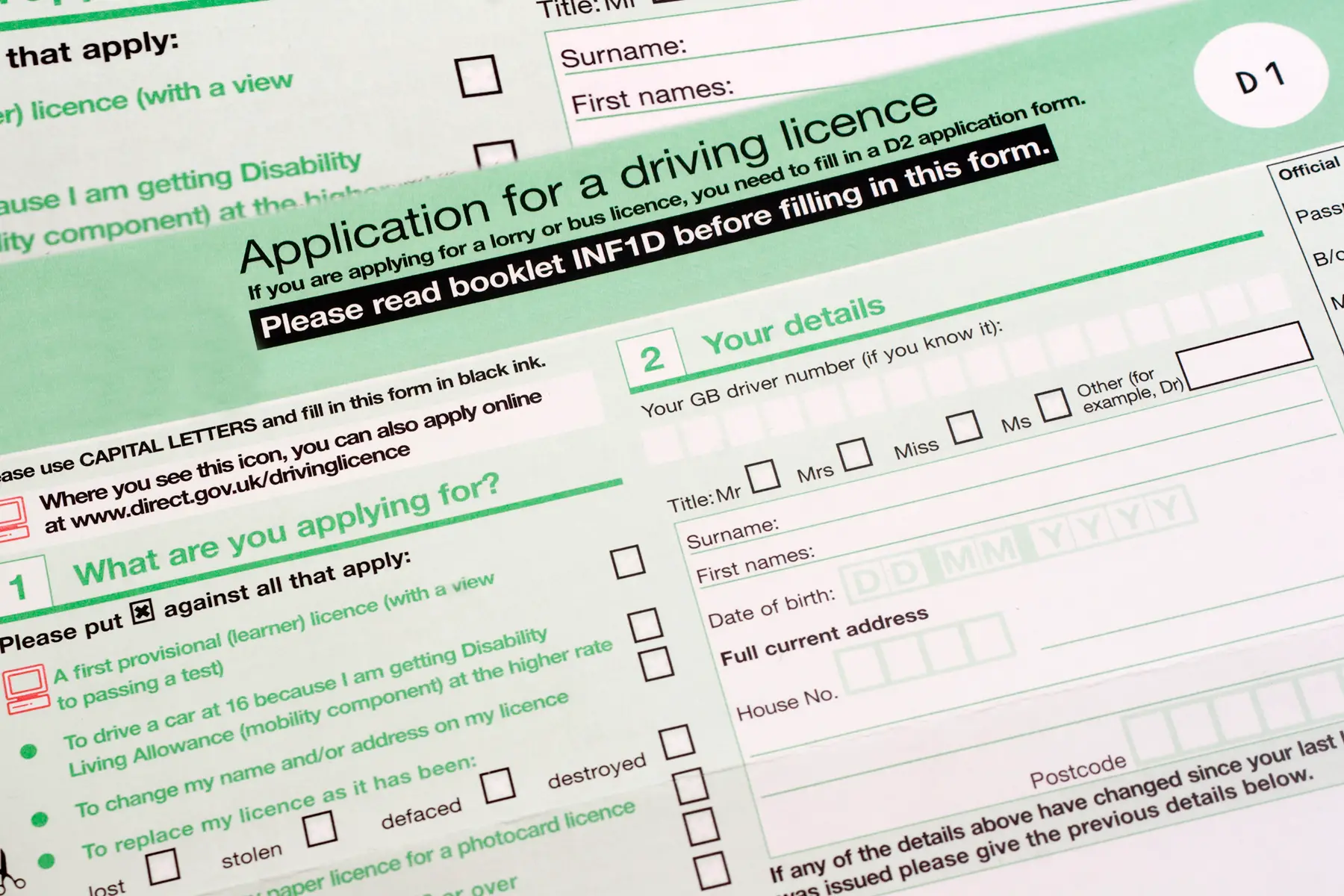
In order to exchange your license for a UK driver’s license, you will need to obtain the appropriate forms from the DVLA or pick up a DL1 form from a Post Office. It is important to note that you can not apply for a driver’s license online – you must fill out a physical form.
Send your completed form back to the DVLA along with your foreign license (which you will not get back), proof of identity, a passport-sized photo, and cheque or postal order for £43 (England, Wales, and Scotland) or £62.50 (Northern Ireland). You should receive your new UK driver’s license within 6 to 10 weeks.
How to renew a UK driver’s license
A UK driver’s license is valid for 10 years unless you are over 70, in which case you must renew it every three years. You do not need to retake a theory or practical driving test during renewal. If you develop a health or medical condition, you may need to declare this to the DVLA, and it may affect the conditions of your license.
If you have a UK passport, you can renew your driver’s license online. Otherwise, you can apply by post or at a Post Office with a D1 form. Send this with a recent passport-style photo, your current license, and a cheque or postal order for £17 (England, Wales, and Scotland) or £30 (Northern Ireland). Your renewed license should arrive in 3–4 weeks.
Lost or stolen driver’s licenses
If your license is lost or stolen, report it to the police immediately. You can then replace your driver’s license through the DVLA for £20, and you’ll receive it 1–3 weeks later. While you wait, you may continue driving. As your old license will no longer be valid, if you find it, you must return it to the DVLA.
Driver’s licenses in the UK for other vehicles
The UK has different categories of driver’s licenses:
- Mopeds (AM, P, Q)
- Motorcycles (A1, A2, A)
- Light vehicles and quad bikes
- Cars (B, B auto, BE)
- Medium-sized vehicles (C1, C1E)
- Large vehicles (C, CE)
- Minibuses (D1, D1E)
- Buses (D, DE)
- A small number of other specific categories
These license categories have slightly different processes and conditions. You can check what vehicles you may drive on your license. The government website also details these categories and explains the process of being permitted to drive each of them.
Useful resources
- GOV.UK – information on licenses from the British government
- nidirect – details from the Northern Irish government
- Post Office – explanations of criteria and applications


